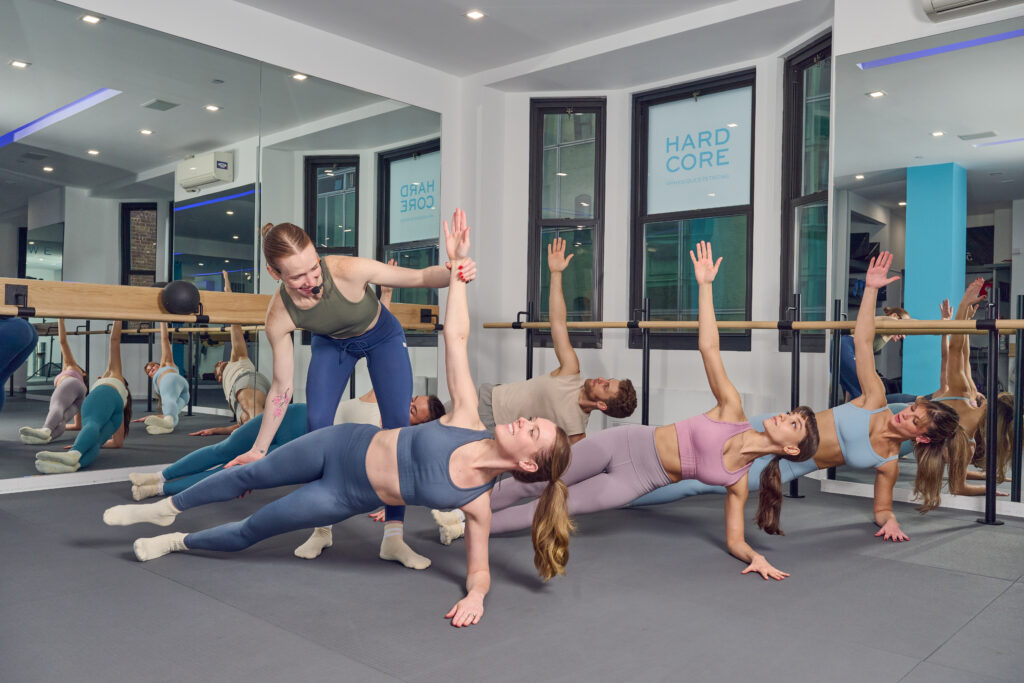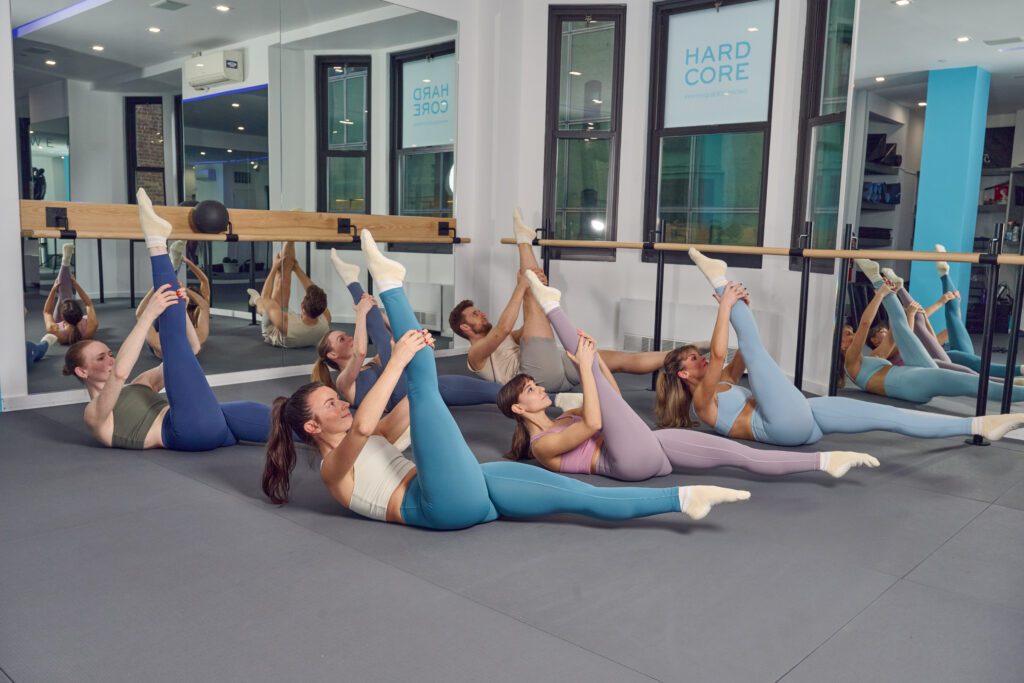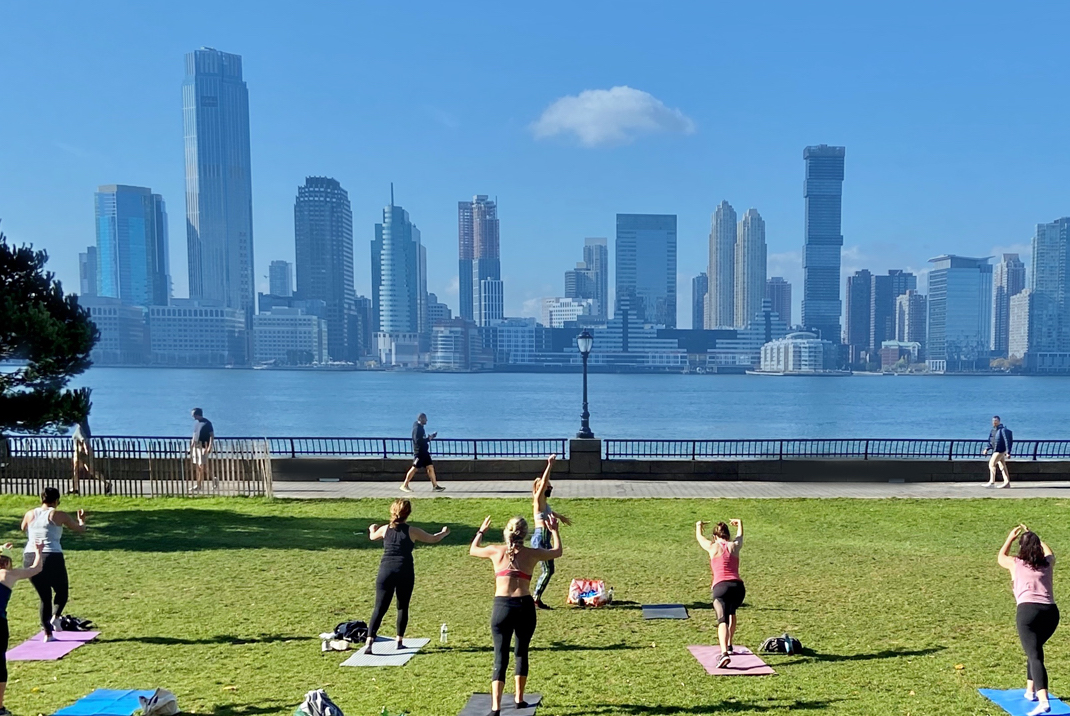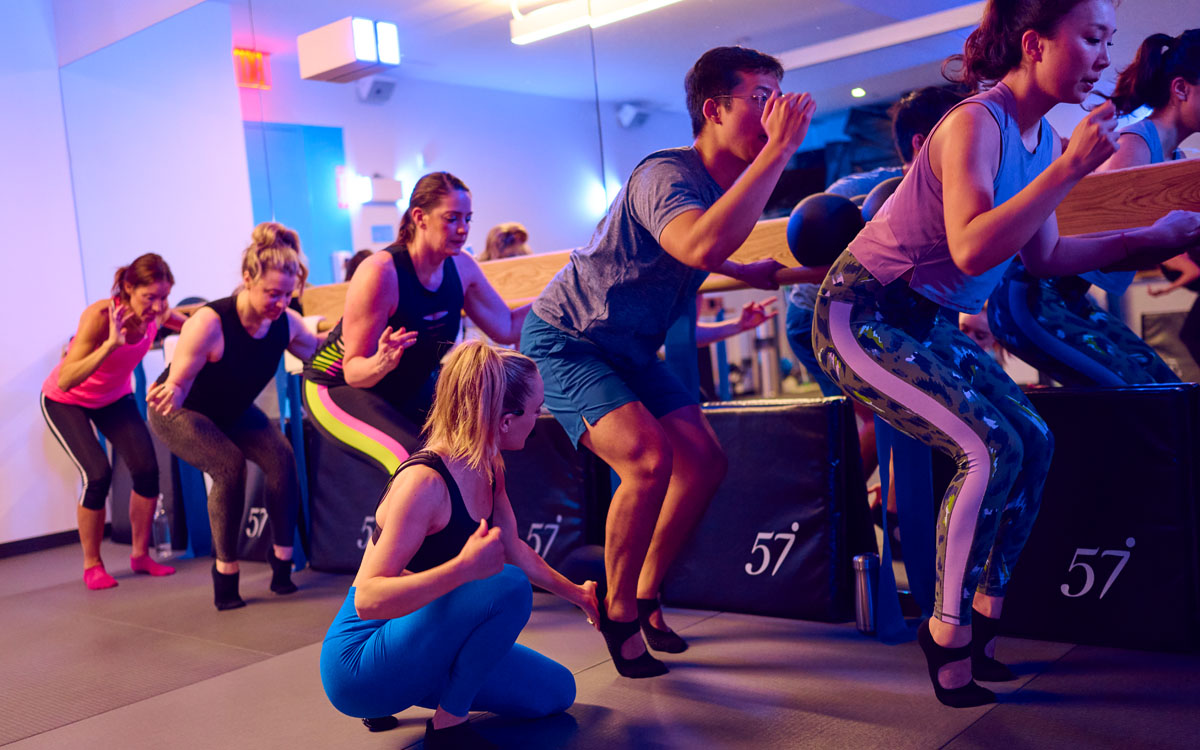When most people think of strength training, they picture barbells, dumbbells, and sweaty gym sessions. Pilates on the other hand, looks quite the opposite: graceful, low-impact, and focused on slow, controlled movements.
But anyone who’s ever held a Pilates plank or pulsed through leg circles knows how Pilates’ controlled movements pack serious power along with those muscle burns. This may spark the question: Is Pilates strength training? While it may not involve lifting heavy weights, Pilates challenges your muscles in ways that undeniably builds strength, endurance, and control that often rivals more traditional workouts.
Now let’s have a look at what really counts as strength training, whether Pilates can be considered as such, and the ways it builds core strength, flexibility, and tons of muscle.
Is Pilates A Form Of Strength Training?
Strength training is a type of workout that uses resistance to build muscles. It challenges the muscles with resistance, growing them to become stronger, build flexibility and endurance. Such resistance can come from gym weights, resistance bands, or even your own body weight through planks, squats, or push-ups. The idea behind strength training is to push your muscles beyond what they normally do, so they can adapt, get stronger, leaner, and more resilient.
It’s more than just building muscles, however. Strength training also improves bone health, flexibility, posture, and balance. Whether you’re lifting a heavy barbell or holding a plank, if your muscles are working against resistance, you’re doing strength training.
Pilates may look calm and controlled, but those small movements pack a punch, especially when you add springs or bands for resistance. It challenges both the large muscle groups and the small stabilization muscles to build strength.

How Can Pilates Build Muscle?
By using one’s body weight, use of springs, reformer equipment, or small props such as resistance bands, mini ball, weights, or foam rollers, Pilates challenges the muscles in an intentional way to build more functional core strength.
Unlike traditional weightlifting which focuses on lifting maximum load to build muscle mass, Ppilates strengthens the deep core muscles, enhancing the foundation of muscle development while providing stability, flexibility, and improving the body’s mobility.
If you’ve ever wondered how Pilates can build muscle; Pilates movements engage both large and deep stabilization muscles making them work harder than they’re used to by holding, pulsing, and resisting in small motion ranges.
Through that, one develops more balanced strength, preventing overtraining just one area, such as how leg circles or reformer footwork both fire up the quads and glutes, while also training the muscle stabilizers. This combination provides a more sustainable way for muscles to adapt, repair, and become stronger. This is why the muscles built from Ppilates have a more toned look.
Debunking 3 Myths About Pilates
Pilates is low-impact, and with regular practice you’ll gain muscular endurance, get leaner, and have a more balanced muscle tone. What’s not to love?
Wanna know more? Here are 3 popular myths about Pilates that you must know by now.
Myth: Pilates won’t make you stronger like weight lifting
It’s easy to assume that because Pilates doesn’t involve lifting heavy weights, it is not real strength training. But by definition, Pilates is considered strength training such that it challenges your muscles through resistance–just in a different way. If you’ve ever felt the infamous Pilates shake, you know your muscles are working hard, while also enhancing endurance, balance and overall flexibility.
Myth: Pilates only enhances flexibility
Pilates does improve flexibility, but it’s just part of the picture. Through controlled movements, Pilates can also build core strength, balance, and enhance coordination. Easy to say, Pilates is a well-rounded form of workout that functionally supports movement and even athletic performance.
Myth: Pilates won’t build your muscles
Pilates, while considered a form of strength training, differs from weightlifting. Pilates builds lean, toned muscles through its slow, controlled movements and muscle engagement. By keeping the muscles under tension longer, this stimulates muscle growth and strength.
Ready to Redefine Strength?

Pilates may not look like traditional strength training, but make no mistake, it challenges your muscles with resistance, simultaneously builds strength, enhances mobility, and tones your body in ways that go beyond lifting weights.
Whether you’re looking to complement your current routine or find a low-impact workout that still makes you feel powerful, Pilates delivers.
If you’re ready to experience it yourself, try Physique 57’s Core Pilates Workout. In this uplifting class, you’ll be raring to feel empowered and unstoppable right after. It’s the perfect way to connect with your core like never before through a mindful yet powerful exercise – right from your mat.
References
- https://www.healthline.com/nutrition/pilates-benefits
- https://www.reddit.com/r/pilates/comments/14sk2cq/does_pilates_count_as_strength_training/
- https://www.reddit.com/r/pilates/comments/14wfp6s/pilates_instead_of_strength_training
- https://www.bu.edu/articles/2025/weight-lifting-or-pilates-pros-cons-misconceptions/
- https://www.onepeloton.com/blog/is-pilates-strength-training



